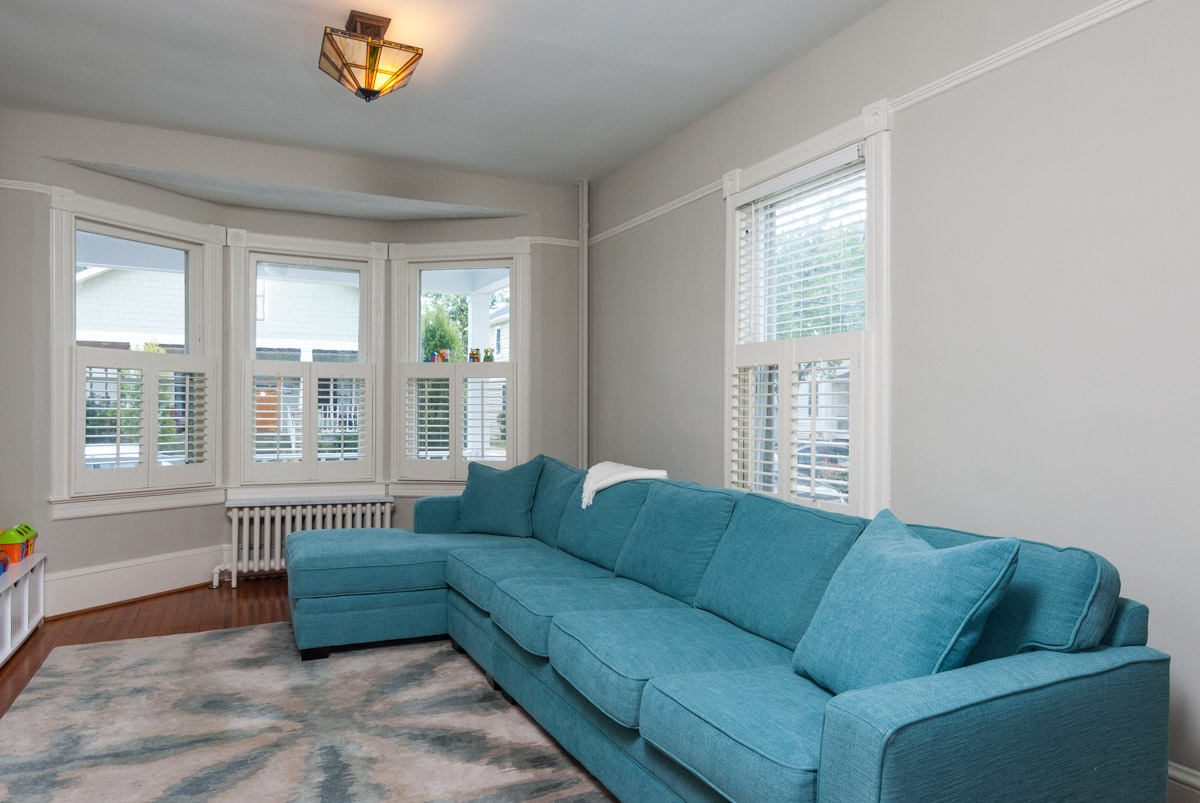My wide-angle lens: the Tokina 11-16mm f/2.8 Pro DX II. 35mm equivalent: 16.5-24mm.
Wide-angle lenses are to real estate photography as baseball bats are to baseball. You can't really play the game without them. But how wide do you need to go?
I shudder and die a little bit inside whenever I hear someone refer to the need for a fisheye lens for real estate photography. Usually these people are not photographers (thankfully) and have no idea what a fisheye lens actually does (Google fisheye lens if you don't know). Rather, they are confusing the term fisheye with wide-angle. While a fisheye lens is a wide-angle lens, extreme distortion is one of its defining characteristics, and that is definitely not something you want to see in real estate photography.
Real estate photographers actually use rectilinear wide-angle lenses. Good rectilinear lenses keep straight lines straight, and even the slight distortion they produce can be easily corrected with post-processing software.
The problem with the majority of real estate photographs is not that they are being shot with fisheye lenses. It's that they are being photographed too wide.
Now, is this the fault of the photographer or the real estate agent?
A lot of the time, it's both. Many in the industry think that wider is better. Show everything that you can possibly show in the space and make it look bigger than it is. It's probably the latter that is the culprit most of the time, and I get it. Many buyers are looking for a spacious place to call home and a lot of the time, you don't actually have a spacious home that you are trying to sell. So, ultra wide-angle photographs create the illusion of a larger space, and you can at least get potential buyers in the door.
There are at least three problems with this, both for the agent and for the compositionally-conscious photographer. The first problem is that you may get your potential buyer in the door but once they see that the space looks nothing like the photo, they may be done. I know I've certainly felt that way in the past.
The second problem is for the photographer trying to create great work. Showing every single inch of the room is not only unnecessary, but it leads to a stagnant composition.
The third problem is more subtle, but something that you'll notice right away in the comparison photos below. The first photo was shot at at 35mm equivalent of 21mm (14mm on my DX sensor camera), while the second photo was shot at the equivalent of 27mm (18mm on DX). Look at the couch and closest window. In the first shot, the couch almost looks like it's falling out of the picture, while the window appears wider than it should.
Now, that isn't lens distortion that you're seeing. That is perspective distortion. The wider the lens, the closer you have to be to your subject to show what you need to show. What happens when you move closer is that objects closer to you appear much closer in comparison to objects further away from you. When you go really wide, that relationship becomes distorted in appearance, leading to the phenomenon you see when flipping between the two photos.
You may have noticed that my 21mm shot above didn't appear distorted until compared to the 27mm shot. But go wider and you'll start to really notice this effect. That's why I try to use the longest focal length I can get away with. I'm still shooting wide-angle, but I'm not just parking myself as close as possible and zooming my lens all the way out (the Tokina can go to 11mm, which is the 35mm equivalent of 16.5mm).
So, what's the solution? You're a photographer trying to get work in this industry, but the agents you work with want wide, wide, wide. Compromise. Look, 24mm is pretty wide. 20mm is quite wide. 16mm? Super wide, but why? It's too much most of the time and lends to distortion. Most of the really great interior photographers out there are shooting the majority of their work between 20mm and 24mm. Interior design photos are often shot with even longer focal lengths, although that comparison is unfair because that's a different industry.
I'm not saying there isn't a time to go ultra wide. There is, but it's not the bread and butter real estate shots. Ease off the wide zoom. Create tighter, more polished compositions. Show what needs to be shown, but make the space look appropriate and inviting. People will come.


